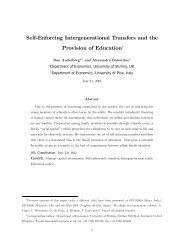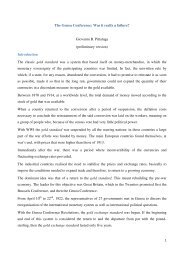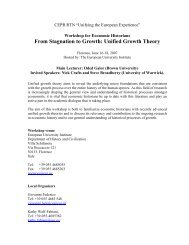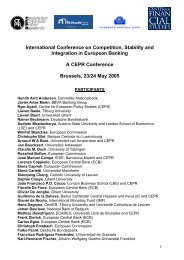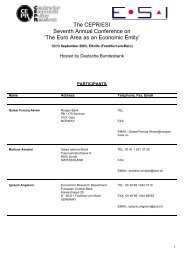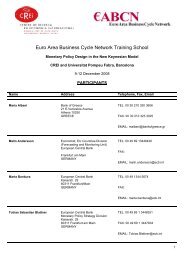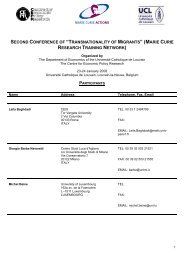MARKET STRUCTURE AND ENTRY: WHERE'S THE BEEF? - CEPR
MARKET STRUCTURE AND ENTRY: WHERE'S THE BEEF? - CEPR
MARKET STRUCTURE AND ENTRY: WHERE'S THE BEEF? - CEPR
Create successful ePaper yourself
Turn your PDF publications into a flip-book with our unique Google optimized e-Paper software.
(i.e., the continuation of operations) as identical to "true" entry of new firms to a given<br />
market. Also, they do not consider the effects of learning. The former is equivalent to<br />
making the assumption that firms can in every period, without a change in costs, review<br />
their entry decision. Given sunk costs, we believe that particular assumption to be<br />
unwarranted, and do not utilize it. In this paper, we follow the lead of the cited papers to<br />
the extent that i) our theoretical point of departure is static (2- or 3-period) entry models,<br />
and ii) we take the unit of observation to be a geographical market (defined more<br />
accurately below). However, we go significantly beyond these papers by introducing<br />
learning and product differentiation into the estimations.<br />
In contrast to the markets studied in most of those papers, our market is a multi-<br />
plant duopoly, where the same two firms are (potentially at least) active in each of the<br />
markets. This last feature greatly simplifies the econometric estimation process, and<br />
allows us to use different estimation methods, and answer the key questions that have<br />
remained unanswered in previous empirical studies of entry behavior. In particular, we<br />
are able to derive explicit results on the strategic interaction of the firms for each firm<br />
separately, thereby allowing for both between and within firm-heterogeneity in both<br />
profits and entry costs, and to explore the effects of existing own and rival outlets on<br />
entry behavior. That is, we allow for and make an attempt at measuring both product<br />
differentiation, and learning.<br />
The remainder of the paper is organized as follows: in the next Section, we review<br />
the relevant theoretical literature and its predictions, and then discuss an extension of the<br />
basic econometric entry model that incorporates firm learning alongside more traditional<br />
factors. In Section 3, we present the main features of the market and the data. In<br />
particular, we explain the definition of markets used, and provide evidence that supports<br />
3



